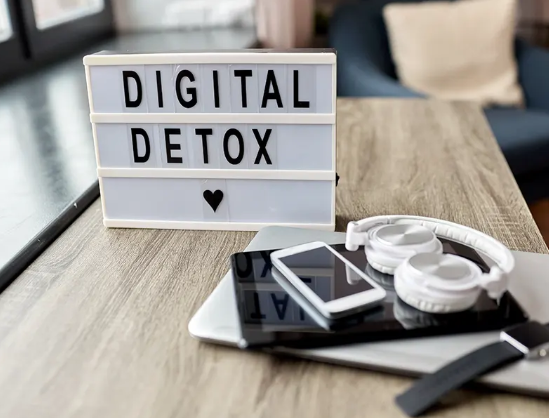We live in an age where the world is always just one swipe away. Notifications buzz before our eyes open, group chats never sleep, and screen time reports read like confessionals. As useful and necessary as our devices have become, the constant connectivity has blurred the boundary between convenience and compulsion.

Enter the digital detox—a conscious effort to disconnect in order to reconnect. Not just a trendy wellness concept, it’s a vital reset for the mind, body, and spirit. More than avoiding screens, it’s about reclaiming your time, sharpening your focus, and restoring presence in your daily life.
Why a Digital Detox Matters
The average adult spends upwards of seven hours a day on screens—most of it unintentionally. While technology has undoubtedly improved communication and productivity, it’s also eroded attention spans, disrupted sleep patterns, and weakened the quality of our in-person interactions.
Research has linked excessive screen time to higher levels of anxiety, depression, and stress. Constant digital input leaves our brains in a state of cognitive overload, unable to rest or reflect. A digital detox is not about renouncing tech—it’s about using it intentionally, not reflexively.
Signs You Might Need a Digital Reset
- You check your phone before getting out of bed and just before falling asleep.
- You feel phantom vibrations or reach for your device without thinking.
- You struggle to finish a task without checking email or social media.
- You feel mentally scattered, overstimulated, or emotionally drained.
- Your real-life relationships feel neglected or disconnected.
If any of these resonate, it might be time to give your nervous system—and your calendar—a break.

A Tool for Goal Setting and Manifestation
Beyond introspection, journaling is a dynamic method for vision building. Writing down goals—big or small—activates a cognitive process known as “encoding,” which boosts our ability to remember and act on them. When we visualize outcomes and articulate steps, we move from vague ambition to defined intention.
Many successful entrepreneurs and creatives swear by tools like gratitude lists, goal trackers, and intention journaling to stay focused. Whether it’s mapping out monthly objectives, scripting your ideal future, or tracking habits, journaling turns dreams into data—and data into decisions.
Tip: Try a “future self” letter once a month. Write as if your goals have already come true, describing what your life looks and feels like. This technique fosters motivation and clarity.
Types of Journaling to Explore
- Freewriting: Stream-of-consciousness writing with no structure.
- Prompted Journaling: Responding to guided questions for reflection or growth.
- Gratitude Journaling: Focusing on daily positives to reframe mindset.
- Bullet Journaling: Organizing thoughts, to-dos, and goals in a visual system.
- Dream Journaling: Recording dreams to tap into the subconscious.
- Therapeutic Journaling: Exploring specific emotions or events for processing and healing.
The beauty of journaling lies in its flexibility. There is no right or wrong way—only what feels right for you.

Final Word: Disconnect to Reconnect
Technology is here to stay, but how we engage with it is up to us. A digital detox doesn’t mean abandoning your devices forever—it means building a healthier relationship with them. One rooted in boundaries, awareness, and choice.
When you take time to log out, you don’t lose touch with the world. You rediscover it—more vividly, more intentionally, and more fully than ever before.

















